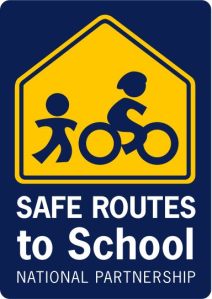The Partnership recently finalized a white paper entitled Making the Most of Non-Infrastructure Safe Routes to School Funds,  which includes examples of various programs and approaches states are using to help increase the number and quality of non-infrastructure programs.
which includes examples of various programs and approaches states are using to help increase the number and quality of non-infrastructure programs.
The most effective Safe Routes to School (SRTS) programs incorporate the “5 E’s” – evaluation, engineering, education, encouragement, and enforcement. It is of critical importance to have
good engineering/infrastructure in place that supports safe walking and bicycling, but as
practitioners continue to realize, even with fantastic infrastructure in a community, there is no
guarantee that children and parents will actually use it. The built environment isn’t the only
part of the solution. There are many other barriers in parents’ minds– stranger danger,
distance, convenience, traffic safety, time, and habits – to name a few. Non-infrastructure
techniques can help to overcome these barriers.
Within the non-infrastructure “E’s” (evaluation, education, encouragement, and enforcement) it is crucial to have organized programs that support walking and bicycling to school and provide safe, convenient ways to do so – e.g., walking school buses, bicycle trains, enforcement of speed laws, traffic safety education and skill building, promotional activities, and other programs that bring parents and children together to walk as a group. These programs also help to:
- Address stranger danger and traffic safety concerns by having adults walk and bicycle with groups of children,
- Cut down on potential crime and bullying with more eyes and more people on the street who are organized groups, and
- Reduce the probability of traffic collisions with parents helping kids cross streets, and providing children with skills and knowledge of traffic safety.
Leave a comment